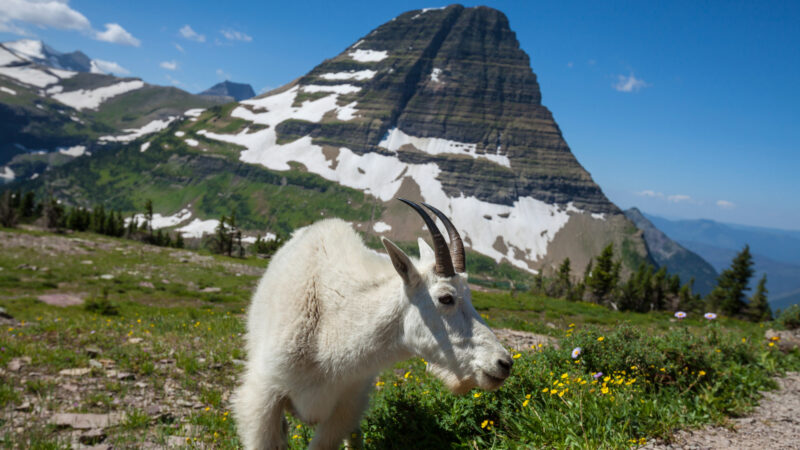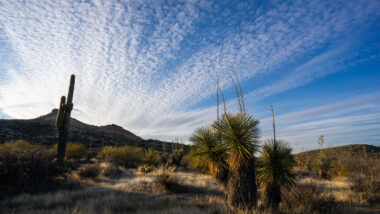Table of Contents Show
In 2022, Outside Magazine published its list of the best national parks for wildlife viewing. From the bats of Carlsbad Caverns to the bison of Yellowstone to the brown bears of Katmai, most of the “big hitters” made the list. But even though it has abundant wildlife, Glacier National Park seems to go unnoticed.
Wildlife in northwestern Montana includes elk, bighorn sheep, black bears, and bald eagles. Today, we’ll look closer at the various species that call Glacier National Park home.
About Glacier National Park
Known as the “Crown of the Continent,” Glacier National Park protects northwestern Montana’s glacially carved landscape, abundant wildlife, and cultural heritage. It’s part of the first international peace park — the Waterton-Glacier International Peace Park — established in 1932, joining Glacier National Park in the United States and Waterton Lakes National Park in Canada.
The spectacular scenery of Glacier National Park draws approximately three million people each year. There are over 760 lakes, 560 streams, 175 mountains, and 26 glaciers. The Going-to-the-Sun Road, one of the most scenic roads in the United States, is a National Historic Landmark.
Glacier National Park has also been certified as an International Dark Sky Park, protecting nocturnal habitats and providing superb stargazing opportunities for the public.
However, the many active glaciers for which this national park is named are shrinking due to climate change. About 80 glaciers were part of the initial national park designation. But only 26 named glaciers remain. According to the National Park Service, “Between 1966 and 2015, every named glacier in the park got smaller, some by more than 80%.”
Is Glacier National Park Popular for Birdwatching?
Glacier National Park has more than 260 species of birds. It’s one of the best places to see harlequin ducks and Canadian geese in the contiguous United States.
You’ll likely see herons, tundra swans, bald eagles, golden eagles, peregrine falcons, osprey, and hawks. So, if birding is your specialty, Glacier National Park is an ideal destination.
Are Bear Attacks Common in Glacier National Park?
Many people wonder if bear attacks are common in Glacier because it’s home to one of the largest concentrations of grizzly bears in the Lower 48. But, like most animals, grizzlies tend to avoid humans. They spend most of their time in meadows searching for food.
There have only been ten fatal bear attacks in Glacier National Park since 1967. So, the likelihood of encountering a bear is slim. And if you follow the rules of wildlife viewing by keeping your distance and not provoking the creatures, your chances are even smaller.
What Glacier National Park Wildlife Will I See?
It’s never a guarantee you’ll see any wildlife when you visit a national park. But if you keep your eyes peeled and listen closely, you’ll likely see at least a few of the animals mentioned below in Glacier National Park. Glacier National Park has varied and abundant wildlife, from giant elk weighing 500 pounds to tiny 4-inch tall pikas.
Black Bears
Black bears are found all over the United States. They aren’t a unique Glacier National Park wildlife species. They spend most of their time in forests, eating roots, young shoots from trees, shrubs, berries, fruits, grasses, and nuts. But they can reach speeds up to 35 mph. So keep your distance if you see a black bear on a hiking trail.
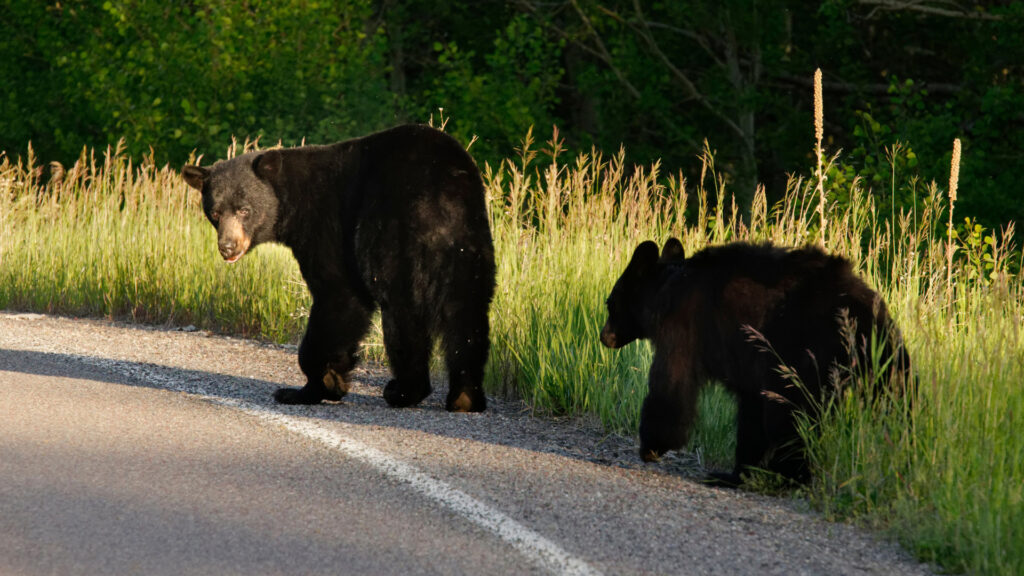
Grizzly Bears
As mentioned, many grizzly bears live in Glacier National Park. Sadly, they’re a threatened species in the United States and an endangered species in Canada. Like black bears, they can reach speeds up to 35 MPH. But they’re much larger than black bears. Adult males can be over 400 pounds, and their front claws can reach 4 inches long.
Bighorn Sheep
The same bighorn sheep that live in the Rockies live in Glacier since the landscapes are similar. You’ll find bighorn sheep in the national park’s alpine meadows and grassy mountain slopes, feeding on grasses and shrubs.
These sheep display large horns that can weigh up to 30 pounds. If you see one, keep your eyes open because you might spot more nearby.
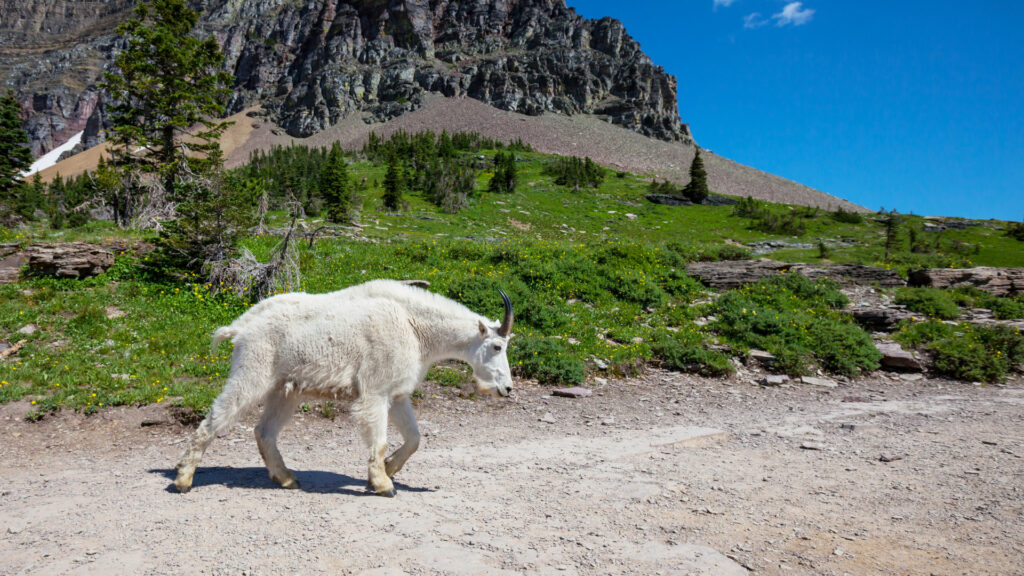
Elk
Elk are some of the largest land mammals in North America. These giants live in the forests and along the forest edge of Glacier. These intelligent creatures move to higher elevations in the summer and return to lower elevations in the winter. If you visit between late August and December, you’ll likely hear the mating bugle call of the males.
Canada Lynx
More than likely, you’ve never seen a Canada lynx. This private creature is a threatened species in the contiguous United States. But one of your best chances of catching a Canada lynx sighting is at Glacier National Park.
They tend to stay in the forests and live alone instead of traveling with a herd. They remain in higher elevations because their long legs help them hunt prey in the deep snow.
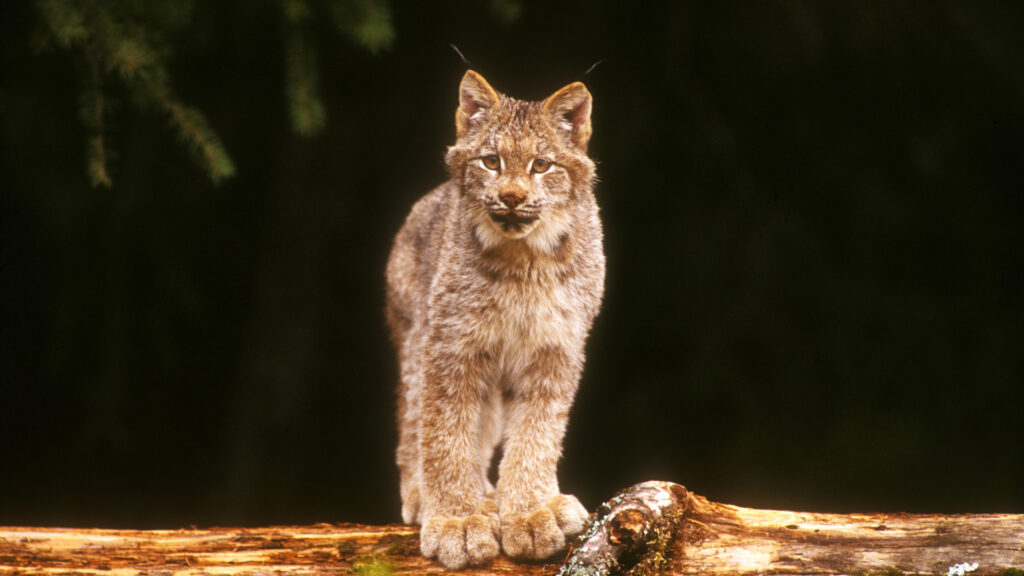
Mountain Goats
Like bighorn sheep, mountain goats are well-suited for living in the higher elevations of Glacier National Park. These mammals have two layers of wool and a dense undercoat to keep them warm even when temperatures fall to minus degrees. Their cloven hooves help them escape predators and climb steep slopes that other animals aren’t able to climb.
Bald Eagles
The largest aerial predators in Glacier are bald eagles. They tend to stay around the lakes and rivers where fish are plenty. Golden eagles are also common but remain in the forests to hunt rabbits, squirrels, and marmots. Although neither species is on the Endangered Species List, they’re both listed as Species of Concern in Montana.
Keep in Mind: Is Eagle, Alaska, Worth Visiting? Click the link and find out!
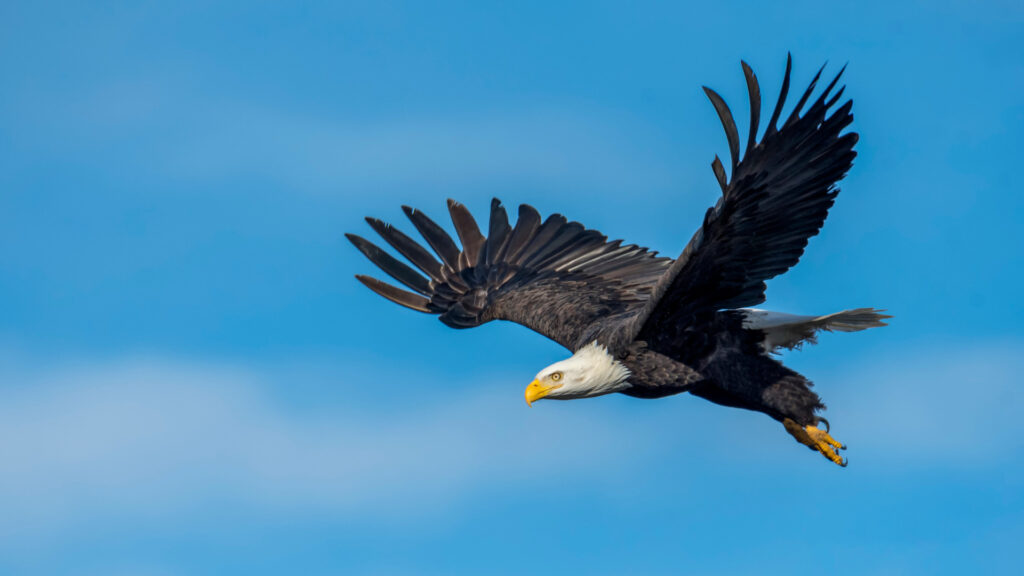
Where Are the Best Locations to View Glacier National Park Wildlife?
Dawn and dusk are the best times to see Glacier National Park wildlife, especially in summer. Large crowds in the summer can send wildlife retreating to more quiet, inconspicuous places. But the weather is also warmer, which changes the patterns of the animals.
Logan Pass is an ideal spot to view bighorn sheep and mountain goats. St. Mary Lake and the Many Glacier trails are prime locations for bear sightings.
Elk can also be seen near the St. Mary Lake Visitor Center. High-elevation hiking trails and the highest points along the Going-To-The-Sun Road are usually the best places to see Glacier National Park wildlife.
Are There Ranger Programs About Glacier National Park Wildlife?
In addition to spotting animals on your own, you can also attend ranger-led programs to learn more about Glacier National Park wildlife. During summer, a daily 15-minute wildlife talk is offered at the Apgar Visitor Center Plaza. You’ll also get a bear spray demonstration.
There are guided hikes and walks in the Lake McDonald, St. Mary Valley, Many Glacier Valley, and Two Medicine Valley areas of the park. Rangers will lead guests on a hike (ranging from 2-10 miles) and discuss the geology, wildlife, culture, and history of Glacier National Park.
Other ranger-led activities include evening programs that focus on the natural and cultural history of the park. During the summer, the park hosts the Native America Speaks program, where members of the Blackfeet Nation and the Confederated Salish and Kootenai Tribes share their history and culture.
Keep in Mind: Enjoy Glacier National Park and stay at one of these 13 campgrounds!
Spot the Diverse Wildlife of Glacier National Park
Because Glacier National Park covers approximately one million acres, the wildlife is free to roam more than in smaller national parks. Even with two to three million people visiting each year, its expansive boundaries provide plenty of space for grizzly bears, elk, bighorn sheep, and more animals to thrive.
So the next time you visit Glacier National Park in Montana, the wildlife will be waiting. What animals will you see?




